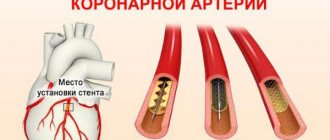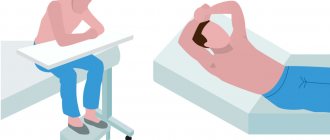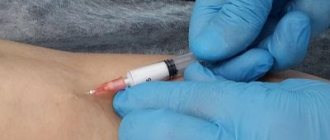Patient complaints that he does not have enough air are not uncommon. Almost everyone has encountered this phenomenon in their life, but not everyone knows that its systematic appearance can be a symptom of a number of pathological conditions that require immediate treatment.
The problem can occur when inhaling (inspiratory dyspnea) or when exhaling, when due to a lack of air it is difficult to exhale (expiratory dyspnea). If both signs alternate, this is mixed shortness of breath. In the process, the person feels a lack of oxygen and breathes heavily with a whistling sound.
Such conditions are typical for pregnant women, patients suffering from pathologies of the heart, pleura or lungs, as well as with traumatic injuries and neuroses. CELT specialists will help determine the reason why there is not enough air when breathing and alleviate the condition. You can find out the cost of our services by going to the “Services and Prices” tab. To avoid misunderstandings, we recommend that you contact our operators to clarify the numbers.
Why is there not enough air when breathing?
Lack of air in healthy people occurs due to the fact that their body receives less oxygen than it needs. It manifests itself during physical exertion, heavy work, climbing, or stress. There are times when the feeling of lack of air is provoked by too tight clothing, squeezing the body.
In older people, it occurs due to age-related changes in the heart and blood vessels and manifests itself even with light loads. In addition, difficulty breathing, as already mentioned, is part of the symptomatic complex of a number of pathological conditions. If you experience it regularly, you need to seek professional medical help in order to accurately determine the cause. The most common of them are:
- Staying in a poorly ventilated room with stale air;
- Unhealthy lifestyle, accompanied by frequent alcohol consumption and smoking;
- A number of lung diseases;
- Pathologies of the cardiovascular system;
- Traumatic chest injuries.
Another initiating factor is the second half of pregnancy. During this period, the uterus seriously increases in volume and provokes the diaphragm to press upward, which does not allow the woman to breathe as deeply as she is used to. The longer the period, the stronger and more often the deficiency is felt, and it occurs not only with minor loads, but also when walking, accompanied by slight dizziness or darkening of the eyes.
The above is especially pronounced in patients carrying twins, triplets, or just a large baby, or suffering from an obstetric anomaly such as polyhydramnios, in which there is an increased volume of amniotic fluid. The problem is particularly alarming against the background of inferior vena cava compression syndrome. When it is present, a woman not only finds it difficult to breathe and lacks air, but also experiences severe dizziness, sudden weakness, fainting and a serious drop in blood pressure.
How to live with low blood pressure
Arterial hypotension - a decrease in blood pressure by more than 20% from the initial/usual values or in absolute numbers - below 90 mm Hg. Art. systolic pressure or 60 mm Hg. mean arterial pressure.
The following types of arterial hypotension are distinguished:
- Acute arterial hypotension
- Chronic arterial hypotension
- Primary chronic arterial hypotension
- Secondary chronic arterial hypotension
Acute symptomatic hypotension (sharp drop in pressure). For example, very low blood pressure is often accompanied by acute myocardial infarction, pulmonary embolism, severe arrhythmias, intracardiac blockades, allergic reactions, blood loss, etc. Emergency medical care is required.
Physiological (chronic) hypotension manifests itself in trained athletes and as a hereditary predisposition to low blood pressure, which does not go beyond normal limits.
Primary (otherwise known as idiopathic or essential) hypotension is an independent disease.
According to one theory, primary hypotension is a special form of neurosis-like disease of the vasomotor centers of the brain, since prolonged psycho-emotional stress and stress may play a very large role in its development.
Secondary arterial hypotension occurs against the background of other diseases (for example, osteochondrosis of the cervical spine, stomach ulcers, anemia, hepatitis, pancreatitis, cystitis, tuberculosis, rheumatism), arrhythmias, alcoholism, diabetes, diseases of the endocrine system or respiratory organs, tumors, shock, brain injuries, liver cirrhosis, mental trauma, circulatory disorders, heart failure, intoxication, as a side effect of certain medications (for example, their overdose in the treatment of hypertension), etc.
Hypotension can also develop due to fasting and lack of vitamins E, C, B and pantothenic acid (B5), in athletes with constant physical activity. This is the so-called “training hypotension.” In this case, low blood pressure acts as a kind of protective measure for the body. It turns out that with constant overload, the body begins to work in an “economy” mode, the heart rate becomes less frequent and the pressure drops.
Pressure also decreases when a person adapts to a sudden change in climatic or weather conditions. In addition, the pressure level is affected by: increased humidity, the influence of electromagnetic fields, radiation, etc.
Most often, low blood pressure is associated with impaired vascular tone. Normally, vessels should quickly narrow and dilate when necessary, but in hypotensive patients this reaction is slowed down. So it turns out that because of this, blood stops flowing in sufficient quantities to organs and tissues. As a result, the body's systems and organs, in particular the brain and heart, experience oxygen starvation and are unable to function optimally.
How does hypotension manifest?
Hypotension does not always mean illness. Some people, having constant low blood pressure, feel great, and for them it is normal, while others constantly suffer. Symptoms of low blood pressure include:
- feeling of fatigue, weakness, decreased performance;
- headache; usually dull, constricting, bursting or pulsating, more often in the frontotemporal or frontoparietal region;
- dizziness and fainting;
- intolerance to stuffiness;
- insomnia;
- increased irritability
- irritability;
- sensitivity to weather changes;
- emotional instability, apathy;
- increased sweating;
- violation of thermoregulation (cold hands and feet);
- tendency to motion sickness, nausea.
Interestingly, the time of day is of great importance for the well-being of hypotensive patients. So, they get out of bed sleep-deprived and exhausted, then, after an hour or two, they come to their senses. During the day, their performance drops again, but by the evening they are again cheerful and ready for a feat.
Hypotonic people love cold weather more, since they tolerate cold much better than heat. It is especially difficult for them in public transport, in a crowd - the stuffiness makes them feel dizzy and headaches, they may even faint. Fainting can also be caused by a sudden rise from a lying position, especially in the morning after sleep. The state of health of a hypotensive person worsens both after a heavy meal and after a strong emotional shock.
How to live with hypotension
If hypotension was a manifestation of another disease, then, naturally, it is necessary to be treated for it.
With primary hypotension, you first need to pay attention to lifestyle.
If possible, it is better to adjust your daily routine to your well-being: sleep longer in the morning, perhaps lie down for a couple of hours in the afternoon, planning the main tasks for the second half of the day, when you feel cheerful and rested. Unfortunately, not everyone can afford such a routine.
But anyone can train blood vessels. After all, it is their reduced tone that is the cause of all the troubles of hypotension. Pouring cool water with a gradual decrease in its temperature or a contrast shower are suitable for this, but the transition from heat to cold should not be abrupt, but smooth.
Coffee is believed to be a tonic. If it helps you cheer up, you can drink it, but you shouldn’t get too carried away - two or three cups a day are enough. You can try to improve vascular tone with green tea, only real tea, brewed, and not in bags.
Since a large meal is difficult for a hypotensive person, it is advisable to eat in small portions, but more often. And the diet must contain animal proteins.
The first friend of a hypotensive person is fresh air. Often a simple walk can help get rid of a headache. Walk more often, walk, if possible, sleep with an open window or vent, or at least ventilate the bedroom well at night.
And of course, physical activity is vital for those suffering from low blood pressure. This could be a set of exercises (only without sudden head movements), skiing, cycling, or exercise in the pool. But all this is without fanaticism - the load should be moderate.
Simple and banal, however, you should not neglect these simple recommendations - they will really make the life of a hypotensive patient more comfortable.
Doctor - therapist (precinct) 2nd ter. departments
Belevich Elena Alexandrovna
Diseases that cause lack of air
| Diseases | Causes, symptoms |
| Cardiological | Patients suffering from pathological conditions characterized by heart rhythm disturbances complain of shortness of breath and lack of air:
People suffer from it in diseases characterized by a lack of blood supply to the myocardium: angina pectoris, ischemia. The severity of the feeling of lack of air depends on the form and degree of insufficiency: in mild cases it is recorded under minor loads or in stressful situations. The problem is manifested by a lack of oxygen and rapid breathing when doing work or while walking. Other symptoms include cyanosis, chest pain, and swelling of the legs. |
| Pleurisy | A feeling of lack of air develops during inflammatory processes of the pleural layers, accompanied by the appearance of fibrin on their surface or the accumulation of exudate in the cavity. Breathing disorders occur due to severe pain of an acute stabbing or dull pulling nature: the patient tries not to inhale deeply so as not to experience them. The above is accompanied by fever, chills, and cough. |
| Laryngeal stenosis | The most common triggering factor for lack of air is pathologies that provoke obstructions and, as a result, limited oxygen supply. This is typical for acute and chronic stenosis:
|
| Lungs | Inflammatory and diffuse lesions of the lung tissue - initiate deficiency due to the fact that part of the lungs is “switched off” from the breathing process. This happens when:
|
| Foreign bodies in the respiratory tract | Blocking the airways with foreign objects can not only make breathing difficult, but also make it impossible. The person feels suffocated, restless, and takes a position in which he can at least somehow breathe. The symptom develops suddenly after accidentally inhaling an object and is accompanied by coughing, lacrimation, and intense salivation. |
| Pulmonary and pleural neoplasms of malignant etiology | Respiratory disorders are accompanied by a complex of specific symptoms, depending on the location of the neoplasia. Common to all are rapid fatigue, appetite disturbances, and rapid loss of body weight. A similar thing happens with pleural cancer or lung adenocarcinoma, in which malignant cells spread along the walls of the alveoli and bronchioles. |
| Traumatic injuries to the lungs and chest | This type of injury is called thoracic. These include:
|
Treatment of obstructive bronchitis
The main tasks that must be solved in case of obstructive bronchitis
- The cough is relieved - it should not interfere with sleep, do household chores, irritate or disturb loved ones.
- It is necessary to restore the normal passage of air through the bronchi - reduce obstruction, improve expectoration of sputum.
- The infection must be destroyed.
- After recovery, prescribe a program to strengthen the immune system, conduct rehabilitation and give recommendations for vaccination against influenza and pneumonia.
Acute uncomplicated bronchitis can be cured without active treatment and without consequences. It is better for the patient not to go to work at this time, but to stay at home. Drink plenty of warm drinks and recovery usually occurs within 7 days.
Remember: Obstructive bronchitis carried on the “legs” can be complicated by pneumonia!
To treat obstruction, Berodual is used through a nebulizer. Expectorants are ineffective in acute cases. The decision on use is made by the doctor.
If the illness is accompanied by an increase in body temperature for more than 4 days, consult a pulmonologist. You may have pneumonia and need other medications.
With an exacerbation of a chronic obstructive process in the lungs, the task is different. Treatment is mandatory. To prevent the disease from progressing, active treatment is necessary. The causes of exacerbation of this disease are usually associated with a bacterial infection due to a cold or hypothermia. Treatment cannot be achieved without antibiotics. Modern expectorants will be required. Inhaled bronchodilators, especially through a nebulizer, will quickly reduce cough.
For asthmatic bronchitis, treatment is aimed at stopping a sudden narrowing of the lumen of the bronchi. The disease develops in response to inhalation of an allergen, chemicals with a strong odor, or organic dust. It is necessary to exclude the patient's contact with the irritant. Symptoms of this disease are coughing attacks, wheezing and whistling in the chest. The clinical picture is bright. For therapy, bronchi dilators, expectorants, and inhaled or intravenous steroids will be effective. Antibiotic therapy is rarely used.
Treatment methods
Medicines
Antibiotics are necessary to destroy bacteria that cause inflammation in the bronchi. Due to the high percentage of thoughtless use of antibiotics, the number of bacteria resistant to treatment has increased.
Don't self-medicate! Antibiotics must be prescribed by a doctor! In the medical scientific community, there are clear recommendations for prescribing antibiotics for regions of our country.
Antiviral drugs are necessary only for the treatment of influenza and bronchial inflammation accompanying this disease. Only two drugs with proven effectiveness against this virus are used - Oseltamivir and Zanamivir. These medications only treat influenza; they are useless for other acute respiratory viral infections.
Prescribing immune stimulants will not bring tangible results. Therefore, you will not find these drugs in the recommendations of medical societies.
In case of bronchial obstruction, drugs that resolve this obstruction are needed and effective - they dilate the bronchi.
Bronchiodilators (bronchodilators)
These medications are inhaled through nebulizers. These include Berodual, Atrovent and Salbutamol. The doctor prescribes treatment because they have side effects.
Steroid medications are effective for chronic asthmatic bronchitis. They are inhaled by inhalation or administered intravenously.
Expectorants - ambroxol, acetylcesteine or carbocesteine. The drugs can be used in the form of inhalations or parenterally (intravenously). The dosage and frequency of taking these medications is determined by a pulmonologist.
Inhalations
In the treatment of obstructive bronchitis, the role of inhalation is difficult to overestimate. Compressor nebulizers spray antibiotics, bronchodilators, expectorants, corticosteroids into microparticles and inject a therapeutic aerosol into the bronchi. The advantage of this delivery method is that the medicine is delivered precisely to the site of inflammation. Therefore, when treated through a nebulizer, it is possible to quickly reduce cough, normalize expectoration of sputum, and reduce its viscosity.
Massage
A massage that has proven to be very effective and simple to treat is cupping massage. Cupping massage came to us a long time ago from Chinese medicine. Irritation of the reflex zones of the skin of the back stimulates expectoration of mucus, reduces cough and leads to recovery.
“Ventum Vest Vibration” is a complex effect of vibration massage and pressure on the chest at the same time. The patient is put on a special vest into which air is pumped under pressure. By changing the frequency of air supply to the vest and the pressure on the chest, the immune system is activated. This occurs due to improved microcirculation in the affected bronchi. Improves lymph circulation and regeneration of damaged bronchial mucosa. If vibration massage is combined with inhalation of antibiotics and expectorant medications, their concentration in the affected bronchi will increase. The complex effect on the bronchi promotes rapid recovery without complications.
Exercise therapy and breathing exercises
At the stage of reducing the severity of the disease or exacerbation, exercise therapy and breathing exercises will increase expectoration of sputum and improve blood supply to the bronchi. This will reduce inflammation, shortness of breath and difficulty breathing. This effect is obtained by training the respiratory muscles. These muscles include the diaphragm, intercostal muscles and back muscles. The main audience for whom exercise therapy helps are patients with chronic smoker's cough and COPD.
Possible consequences and complications of obstructive bronchitis
If bronchial obstruction is treated incorrectly, serious complications are possible. Pneumonia comes first. Pneumonia is an acute infectious disease that leads to rapid death. The risk of developing pneumonia if treatment is not started in a timely manner or is incorrect is high. To prevent the development of pneumonia, the patient must consult a pulmonologist. The doctor will be able to diagnose and rule out pneumonia. Perhaps he will prescribe a course of antibiotics without waiting for pneumonia to develop. If your body temperature does not decrease for more than 3-4 days or constantly increases, your cough intensifies and purulent or brown sputum appears, then there is a very high probability that you have pneumonia.
Against the background of bronchitis, a possible complication is pneumothorax - a rupture of the pleura due to a strong and intense cough. This is a resuscitation situation. Pneumothorax is observed in patients with bullous transformation, COPD, but cases of pneumothorax due to prolonged cough are common. Due to long-term obstruction and inflammation, the lung tissue loses its elasticity and becomes rigid. Lung tissue is easily damaged by coughing. Therefore, if symptoms such as sudden shortness of breath and chest pain appear, you should urgently consult a pulmonologist.
Frequent exacerbations of obstructive bronchitis lead to the emergence or progression of COPD, a disease that leads to the development of respiratory failure and death.
Which doctor should I contact if I have shortness of breath?
If this clinical manifestation is regular, you should first visit your doctor. He will conduct an examination, collect anamnesis - and, based on the information received, send the patient to an appointment with a specialist in pulmonology, cariology, hematology, neurology or endocrinology.
If a patient has a traumatic injury to the chest, he should consult a traumatologist. In cases where shortness of breath is part of an emergency condition - it appears suddenly and sharply - you should immediately call an ambulance.
Diagnosis of air shortage
The initial stages of diagnosis are usually carried out by a therapist. He carries out an examination and collects anamnesis, after which, after analyzing the data obtained, he sends the patient to specialized specialists. To clarify the diagnosis, the latter prescribe the following studies:
- Chest X-ray to detect diseases and injuries;
- Electrocardiography - aimed at identifying heart disease;
- Spirometry - examines the functions of external respiration;
- Laryngoscopy - detects foreign bodies and diseases of the larynx.
Prevention and recommendations for shortness of breath
Physiological shortness of breath goes away on its own after the person has rested. However, if the problem arose acutely and suddenly, the following measures should be taken to alleviate his condition:
- Calm down and sit on a sofa or chair, comfortably resting your back;
- Remove or unfasten tight clothing, a belt that is too tight;
- Provide fresh air by opening a window or door;
- Humidify the air by hanging a pre-wetted sheet near the patient;
- Offer a herbal sedative.
If a person knows about his illness and he has drugs that alleviate his condition, he should be offered to drink them. If he does not feel better within fifteen minutes, he will have to call an ambulance.
There is no specific prevention in this case. However, you can minimize the risk of developing this condition by following these rules:
- Maintaining an active, healthy lifestyle;
- Avoiding excessive physical activity and stress;
- Body weight control;
- Timely treatment of diseases;
- Systematic completion of preventive studies.
Remember: lack of air can be a sign of serious pathological conditions. That is why CELT specialists recommend promptly finding out its causes and taking appropriate measures!
Make an appointment through the application or by calling +7 +7 We work every day:
- Monday—Friday: 8.00—20.00
- Saturday: 8.00–18.00
- Sunday is a day off
The nearest metro and MCC stations to the clinic:
- Highway of Enthusiasts or Perovo
- Partisan
- Enthusiast Highway
Driving directions
Prevention
Prevention of an acute obstructive process in the bronchi is identical to the prevention of influenza and ARVI - these are annual, seasonal flu vaccinations. During the onset of cold weather in the off-season, it is necessary to avoid hypothermia and contact with already sick patients.
To prevent exacerbations of chronic obstructive bronchial disease, first of all, eliminate the external factors that cause it - tobacco smoking, dust in enterprises, work in a mine. Flu vaccination is carried out annually. For patients with chronic obstructive bronchitis, vaccination against pneumonia is carried out. It is carried out once every 5 years.
Treatment at special respiratory resorts is considered an important element of prevention. They exist in our country - Crimea. In Germany (Bad Reichenhall), southern coast of France, coast of Italy. The main task of a patient at a resort is active physical exercise in the fresh air.











